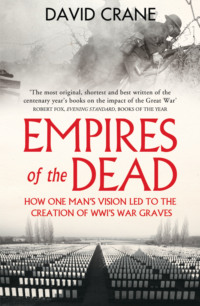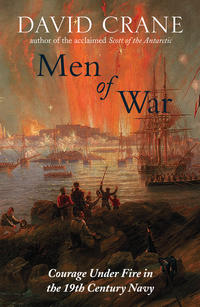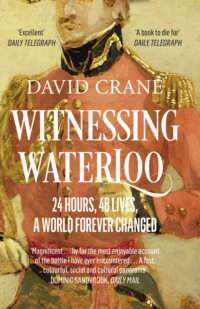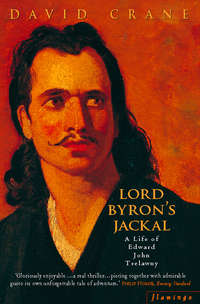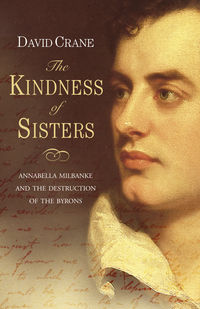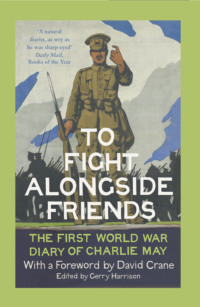
Полная версия
The Kindness of Sisters: Annabella Milbanke and the Destruction of the Byrons

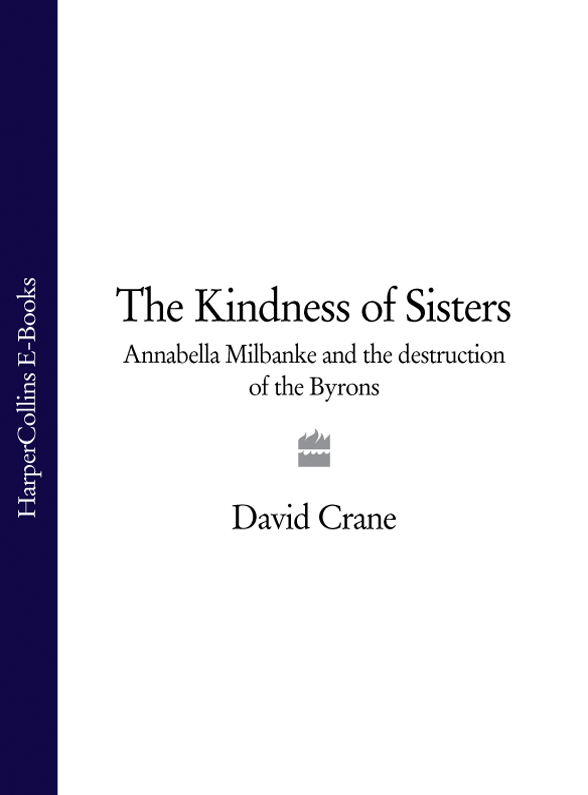
THE KINDNESS OF SISTERS
Annabella Milbanke and the Destruction of the Byrons
DAVID CRANE

CONTENTS
Cover
Title Page
Prologue
I A Meeting of Opposites
II The Meeting
III A Sense of Failure
Marriage
Sleeping With the Vampire
The Kindness of Sisters
An Instrument of Destruction
The End of the Affair
A Preparation for Invisibilty
Epilogue
Endnotes
Select Bibliography
Index
Acknowledgements
About the Author
Other Works
Copyright
About the Publisher
PROLOGUE
The glory of mankind has been to produce lives, to provide vivid, independent, individual men, not buildings or engineering works or art, not even the public good.
D. H. Lawrence1
You should not have warred with the World – it will not do – it is too strong always for any individual.
Madame de Stael to Byron2
In the late afternoon of 15 June 1938, a small group of men stood at a gaping hole at the south-west corner of the chancel of St Mary Magdalen, Hucknall. Beneath their feet a short flight of steps led down to a low, cramped vault, and by the glare of a photographer’s lamp they could make out a pile of coffins heaped on top of each other in a mouldering jumble of wood and bone and twisted lead that had lain undisturbed for over fifty years.
They had converged on the church in some secrecy. Earlier in the day a lorry had brought builders’ tools and planks to the north door, and one by one through the afternoon a surveyor, antiquarian and doctor had appeared. Finally a mason and three labourers arrived and began lifting the massive, cracked slab of York stone that now lay beside the open crypt.
It took them two hours to raise the stone, but by six o’clock in the evening it was done. During the course of the work there were other visitors in the church, but once the vault was open most of these, and all the women, were asked to leave.
Even by English standards, those who remained were a curiously prosaic lot to be indulging a taste in literary necrophilia. There was clearly a generous streak of romance in the character of Canon Barber, the Vicar of Hucknall, but if a brace of churchwardens and half the professional classes of the county were not ballast enough to steady the most extravagant imagination, he had also co-opted the Diocesan Surveyor and local MP in a bid for respectability.
A miner’s lamp was swung into the vault to test the air, a ladder lowered to avoid the shallow, awkward steps, and Canon Barber climbed down, followed in turn by the surveyor, photographer and antiquarian. The purpose of the meeting, if the Canon is to be believed, was to establish the existence of a lost medieval crypt, and although it was soon plain that any such hopes were misplaced, measurements were duly taken and recorded, leaving the way clear for the real, if unacknowledged, business of the day.
The labourers were dismissed until the next morning, and the party adjourned to the church hall, only returning at the dead of night. Again, Canon Barber was the first down. Alone in the vault, lit now only by the photographer’s lamps, he had time for a more careful inspection. It was a cramped, rectangular chamber six feet wide, just over seven feet long, and no more than eight feet beneath the floor of the nave. Its walls were of plastered brick, with two sloping slabs of stone making the vaulted roof. In three piles, running north to south rested the more or less intact shells of about half a dozen coffins, with the crushed debris of others beneath them. Round his feet lay the dust and bones of three centuries.
There seemed to be no order to anything. At the foot of the stairs, though, he identified the seventeenth century coffin of a baby, its lead lining buckled and twisted under the weight of a double-cube funerary chest, to which scraps of faded purple velvet still clung. On the lid was a brass plate with the following inscription:
Within the Urnare depositedthe heart and the brainof the deceasedLord Noel Byron
The lid was loose, and inside was a sealed lead case, with a second inscription adding an oddly casual ‘etc’ to the contents of the urn. Beyond the chest, Barber could now distinguish more easily the coffin for which he was searching. It was made of well-preserved oak and ornately decorated. Further shreds of purple material – faded since to crimson – clung to the brass headed coffin nails. On the lid rested the remains of a Baron’s coronet. The velvet and ermine had rotted away, and the pearls had been wrenched from their finials. Only the simple rim survived to identify the rank and probable identity of the dead.
There was no coffin plate to confirm Barber’s guess, but the lid was loose and he could see that the lead casing had already been cut open. ‘Somebody’, he recalled with an endearing disingenuousness, ‘had deliberately opened the coffin.
A horrible thought came over me that souvenirs might have been taken from the coffin. The idea was revolting, but I could not dismiss it. Had the body itself been removed? Terrible thought! From time to time visitors to the church had asserted in my hearing that the body of the Poet was not in the Vault. I wondered now on what ground this assertion could have been made. Had they known of the opening of the coffin, and received some secret information that the body had been removed? The more I thought about it, the more fearful I became of the possibility of the coffin being empty. There was the coffin before me – the lid was loose and easily raised – the leaden case within torn open. Within the case was another coffin of wood – the lid had never been fastened. What was beneath it? If I raised it, what should I discover? Dare I look within? Yes, the world should know the truth – that the body of the great poet was there – or that the coffin was empty. Reverently, very reverently, I raised the lid, and before my eyes there lay the embalmed body of Byron in as perfect a condition as when it was placed in the coffin one hundred and fourteen years ago. His features and hair were easily recognisable from the portraits with which I was so familiar. The serene, almost happy expression on his face made a profound impression upon me. The feet and ankles were uncovered, and I was able to establish the fact that his lameness had been that of the right foot. But enough – I gently lowered the lid of the coffin and as I did so, breathed a prayer for the peace of his soul.3
‘Close thy Byron and open thy Goethe’, that renegade Byronist Thomas Carlyle demanded in Sartor Resartus, but Barber’s vandalism is only the most literal example of England’s refusal to bend to the Sage of Ecclefechan. From the moment in July 1824 when Byron’s black servant struggled for one last view of his master’s coffin as it was lowered into the Hucknall vault, a defiant nation has shared his reluctance to let its most notorious poet go, a complex mix of curiosity and guilt driving it to re-stake its claim in the man it had once forced into exile.
It is as hard to exaggerate the impact of Byron’s death on England as it is that of his life. In the orthodox histories of the nineteenth century the two seminal figures of his age are Coleridge and Bentham, but both men were pre-eminently ‘sires of sires’, their influence disseminated through disciples until it was simply part of the zeitgeist – lived and breathed by men and women who would have been hard pressed to identify the source of their beliefs.
With Byron it is the opposite, and there is in this sense no English writer like him, no one who has stamped his image so firmly on the phenomenon that bears his name, no one who has so completely made his life the measure of his art. It is difficult to imagine that anybody in their right mind has ever allowed a dislike of Wordsworth to stand in the way of his Prelude for instance, but from the first triumph of Childe Harold, Byron and his art have been inseparable, his personality and life validating or threatening the poetry in ways that have no obvious parallel. ‘We shall, like all others who say anything about Lord Byron’, Blackwood’s declared,
begin, sans apologie, with his personal character. This is the great object of attack, the constant theme of open vituperation to one set, and the established mark for all the petty but deadly sneers, shrugs, groans to another … Is there a noble sentiment, a lofty thought, a sublime conception in the book? ‘Ah yes!’ is the answer. ‘But what of that? It is only the roué Byron that speaks!’ Is a kind, a generous action of the man mentioned? ‘Yes, yes!’ comments the sage; ‘but only remember the atrocities of “Don Juan”.’ Salvation is thus shut out at either entrance: the poet damns the man, and the man the poet.4
With the solitary exception of Milton, no English writer has so polarised opinion or posthumously stirred such visceral responses as Byron. In the wake of Shelley’s death off the coast at Lerici the Tory press might lash him with a cruel and casual contempt that still has the power to shock, but the entrenched battle lines that formed around Byron’s memory are of another order altogether, scars that define not just a world of coterie politics but the permanent cultural life of a whole nation.
It is notable, in fact, that it is not with other literary reputations that the posthumous cult of Byron can be compared, but with those deaths that seem to reveal some crisis of confidence or national identity. In more recent times the great state funeral of Sir Winston Churchill patently belonged to an order of its own, but if the sombre mood of that week was of an empire mourning its own passing, one only needs to think of other such funerals – Wellington’s, Nelson’s, the torch-lit procession of the old, mad George III – to recognise the context in which Byron’s needs to be seen. ‘We have been stunned from another quarter’, Sir Walter Scott wrote,
by one of those deaths … as from an archangel’s trumpet to awaken the soul of a whole people at once.5
‘Hark! forth from the abyss a voice proceeds,’ Byron himself wrote of Princess Caroline – lines doubly prophetic of the mood that would greet his own death and that of another thirty-six year old aristocratic exile whose funeral cortege followed the almost identical journey northwards through the streets of London,
A long low distant murmur of dread sound,
Such as arises when a nation bleeds
With some deep and immedicable wound …
Scion of chiefs and monarchs, where art thou?
Fond hope of many nations art thou dead?
Could not the grave forget thee, and lay low
Some less majestic and less beloved head?6
There was something else about Byron’s death, however, something alien and atavistic, that not even the politicised guilt and pseudo-Catholic trappings of Princess Diana’s funeral can quite match. Some years ago there was a documentary film of a Bengali village terrorised by a man-eating tiger, and in the ritual celebrations that greeted its killing, the frenzy of hands that stretched up in a bizarre mixture of fear and reverence to touch the garlanded corpse, we probably come as close as we can to the mood in which England awaited the return of Byron’s body.
For Byron was that tiger (an image he used of himself – for that matter an image his mother-in-law used of him) – Blake’s tiger, a thing of ‘fearful symmetry’, an elemental force, beyond comprehension – too dangerous to be allowed to live and too vital to live without. ‘Alas poor Byron,’ Carlyle wrote in the flush of pentecostal panic that greeted the news from Greece,
The news of his death came down on my heart like a mass of lead; and yet, the thought of it sends a painful twinge thr’ all my being, as if I had lost a brother! O God! That so many souls of mud and clay should fill up their base existence to the utmost bound, and this, the noblest spirit in Europe, should sink before half his course was run!… We shall hear his voice no more: I dreamed of seeing him and knowing him; but the curtain of everlasting night has hid him from our eyes. We shall go to him, he shall not return to us. Adieu my dear Jane. There is a blank in your heart, and a blank in mine, since this man passed away.7
With his looks and glamour, his aristocratic pedigree, and the scandals that clung to his name, it is no surprise that Byron excited this attention in life, but the oddity is that death only intensified the cult of personality that surrounded him. For Jane Welsh the blank in creation his death left could have been no greater if the sun or moon had fallen from the skies, and it was as if no one could quite believe the enormity of their loss without the evidence of the body. ‘Don’t look at him, he is dangerous’8, a horror-struck Lady Liddell had warned her daughter, covering her eyes when she saw the exiled Byron in Rome, but in death that was just what everyone wanted to do. In Missolonghi the wretched Julius Millingen and the rest of Byron’s doctors had hacked at his corpse in a brutal parody of an autopsy, measuring his skull and weighing his brain, slapping vital organs on their scales as if the mystery of genius and personality was there to be found in his remains. In the same room, only days later, his companion and biographer, Edward Trelawny, pulled back the burial sheet to stare down on Byron’s body with a similar confidence – ‘the great mystery was solved’, he later wrote with a ruthless disregard for truth; ‘Both his feet were clubbed, and his legs withered to the knee – the form and features of an Apollo, with the feet and legs of a sylvan satyr.’9
Back in England, it was little different when after almost six weeks at sea the Florida docked with his coffin just below London Bridge. While Byron’s old friend Hobhouse waited on deck for the undertakers to drain the preserving spirit off the corpse, crowds lined the banks and watched from the flotilla of small boats that bobbed around the ship, as eager to glimpse his return as they had been to watch his departure from Dover eight years earlier.
A French officer from Le Havre delivered Hobhouse a request from General Lafayette asking to see the body. Down in the hold, a boy was caught cutting a relic from Byron’s shroud. Over the next days, as the sense of loss sank in, the crowds only grew, men and women queuing in their thousands to pass the coffin as it lay in state in Great George Street, cramming the pavements and windows along the route of the funeral cortege and packing the church at Hucknall so full that there was scarcely room for the coffin.
Nor was this just the morbid excitement of a season, as the Parish Clerk’s Album at Hucknall, placed there by John Bowring more than a year after the funeral, underlines. The church was then a more modest structure than the building which Victorian improvers bequeathed to Canon Barber, but for the mass of visitors who made the pilgrimage, the intimacy of the old St Mary’s ministered to their grief in ways that Westminster Abbey or St Paul’s could never have done. ‘So should it be’, Bowring had written in the front of the album,
let o’er this grave
No monumental banners wave;
Let no word speak – no trophy tell
Aught that may break the charming spell
By which, as on the sacred ground
He kneels, the pilgrim’s heart is bound.
A still, resistless influence,
Unseen, but felt, binds up the sense;
While every whisper seems to breathe
Of the mighty dead who rests beneath.10
The extravagant grief of the young Tennyson, the maudlin reflections of Mary Shelley as she watched the funeral cortege from her Kentish Town window, the lecture extemporised by Coleridge as it passed up Highgate Hill – all these quite properly belong to literary history, but skimming down the lists of names below Bowring’s poem the most striking thing as ever with Byron is the sheer breadth and cosmopolitanism of his appeal. The two names that head the album, for instance, are those of the royal Duke of Sussex and of Pietro Gamba, brother of Byron’s last Italian mistress, who visited Hucknall before sailing for Greece to die in the cause that Byron had made Europe’s. There are visitors here, too, from New Orleans and Baltimore, representatives from the Spanish Cortes and the American Congress, comedians and Grenadier guardsmen, writers, theatre managers and clergymen, school parties, ships’ crews, and – in 1832 – a John de Bracken, home from Calcutta, where eight years earlier prayers for the repose of Byron’s soul rose from a Greek chapel on the banks of the Hoogly.
After the seismic convulsion of grief that greeted Byron’s death, these quieter after-shocks recorded in the Hucknall Album might come as no surprise, but they still raise teasing questions about his place in English cultural life. Among those hundreds of visitors many might have been hard pressed to say what had brought them, and yet in a curious sense it is the presence of the ‘common man’ – the great battle cry of Diana’s funeral – rather than of Washington Irving or the Duke of Sussex that is the most intriguing aspect of the Byron cult.
For a man of Sussex’s liberal pretensions, the pilgrimage carried clear and deliberate political overtones, but precisely what kind of ‘fane’ did those hundreds of obscure admirers imagine they were visiting at Hucknall? What were parents doing, signing the visitors’ book with their daughters, paying homage at the shrine of a man who had publicly ridiculed every tie of family life? Why were army or naval officers at the tomb of a poet who took such pride in sharing Napoleon Bonaparte’s initials? What did good protestant Englishmen think they were up to, leaving messages that would not look out of place at the foot of the Bambino in Rome’s Aracoeli? What was it that brought so many clergymen to the grave of a writer the Bishop of Calcutta had labelled the ‘systematic poet of seduction, adultery and incest; the contemner of patriotism, the insulter of piety, the raker into every sink of vice and wretchedness to disgust and degrade and harden the hearts of his fellow-creatures’?11 What was nineteenth century England doing longing after ‘a perfected idol … as the Israelites longed for the calf in Horeb’?12
The most exciting answer to these questions is that Byron had come to represent a subversive element in the national character for which the encroaching morality of the nineteenth century allowed less and less expression. In his wonderfully contrary study of the Byrons, A.L. Rowse once went so far as to claim that Byron was scarcely English at all, and if this is a characteristic overstatement, Rowse is right that the values Byron embodied have always prospered on the margins of English life rather than at its centre, a source of equal fascination and fear to a country reluctant to recognise its own complex identity.
‘Into what dangers would you lead me, Cassius’, a nervous Brutus asks in Julius Caesar,
That you would have me seek into myself
For that which is not in me?’
and the fear that accompanied Byron to the grave was the fear of what he had shown them in themselves.* ‘Every high thought that was ever kindled in our breast by the muse of Byron’, Blackwood’s protested, expressing the sense of outrage and almost self-disgust that his readers came to feel as the full implications of their ‘idolatry’ were brought home to them,
every pure and lofty feeling … is up in arms against him. We look back with a mixture of wrath and scorn to the delight with which we suffered ourselves to be filled.13
It is this that gives the history – and the posthumous history – of Byron its continuing importance because he raised demons that no community could afford to acknowledge or allow to live. In a wonderful sequence near the beginning of Stanley Donen’s Charade George Kennedy opens the west door of a church, strides down the aisle to where an open coffin rests between banks of candles on its bier, stares for a moment at the body, takes a pin out of his raincoat lapel, jabs it into the corpse to make sure it is dead, turns on his heel and strides out again.
There was something of that about Byron’s funeral – the mood along the Tottenham Road seemed to George Borrow like that of an execution – because for all its beauty and fascination the tiger was safer dead. There was nothing feigned in the grief and loss of the young Tennyson or Carlyle, and yet from the notorious day that his closest friends burned his memoirs in John Murray’s offices to the letters George Eliot sent Harriet Beecher Stowe, even Byron’s most passionate admirers needed to deny or suppress the truths that his life embodied. John Cam Hobhouse, that loyal ‘bulldog’, told Tom Moore in a conversation about the memoirs, that he knew more of Byron than anyone else, and much more than he should wish anyone else to know.
‘Yet each man kills the thing he loves’14 wrote a later exile from these shores, and along with the adulation, Byron has always inspired an anxiety that ranges from comic wariness to suspicion, fear and open hatred. Through the novels of the nineteenth century Byronic imitators would continue to stalk the Caucasus or the moors with all the misanthropic glamour of their original, but from Persuasion to Jane Eyre, from Glenarvon to Dracula, from Mary Shelley’s Raymond to Polidori’s Ruthven – the first vampire in English fiction – ‘Byronism’ is a physical threat to be feared, shunned, exiled, immolated, staked through the heart or – that most English of solutions, – blinded, crippled and then, ‘Dear Reader’, married.
It is only too appropriate that Mary Shelley’s name should feature on this list, because no one has so painfully united what D. H. Lawrence called the ‘predilection d’artiste’15 for the aristocrat with a bourgeois fear of everything he stands for. ‘For there does exist, after all,’ Lawrence wrote in his great essay on Thomas Hardy – an essay characteristically less about Hardy than Lawrence himself –
… the great self-preservation scheme, and in it we must all live … But there is the greater idea of self-preservation, which is formulated in the state, in the whole modelling of the community … In the long run, the State, the Community, the established form of life remained, remained intact and impregnable, the individual, trying to break forth from it, died of fear, or of exhaustion, or of exposure to attacks from all sides, like men who have left the walled city to live outside in the precarious open. This is the tragedy of Hardy, always the same: the tragedy of those who, more or less pioneers, have died in the wilderness, whither they have escaped for free action, after having left the walled security, and the comparative imprisonment, of the established convention. This is the theme of novel after novel: remain quiet within the convention, and you are good, safe and happy in the long run, though you never have the vivid pang of sympathy on your side; or, on the other hand, be passionate, individual, wilful, you will find the security of the convention a walled prison, you will escape, and you will die, either of your own lack of strength to bear the isolation and the exposure, or from direct revenge from the community, or from both. This is the tragedy, and only this.16
This book is the story of that tragedy, because supreme among the Lawrentian outsiders is Byron, an aristocrat in the conventional sense by a convoluted accident of inheritance, an aristocrat in the Lawrentian sense to the core. It has been plausibly argued that Byron was never in fact at ease with the chance that brought an impoverished Aberdeen schoolboy a title, but from that day in 1812 when, as the author of Childe Harold, he ‘woke to find himself famous’ his life became a paradigm of Lawrence’s struggle between the individual and the community – the archetype of all those artists forced into exile, compromise or silence by the hostility of the crowd, of the men and women who have had to pay with their freedom or security for their integrity, the living victims of that same communal, English instinct for self-preservation that pushed Hardy to sacrifice his heroes and heroines on the altar of social convention.


